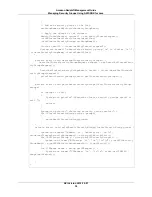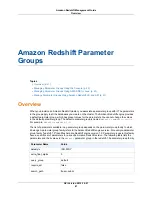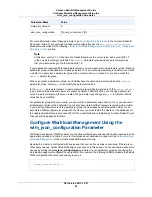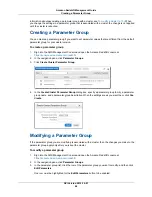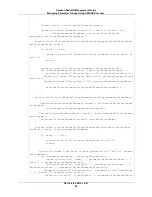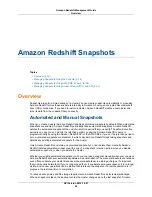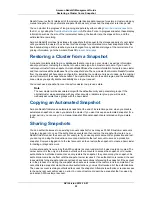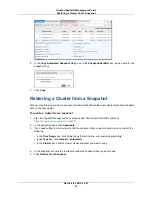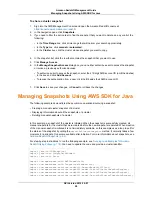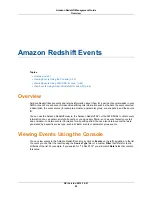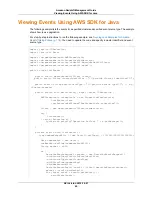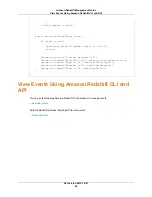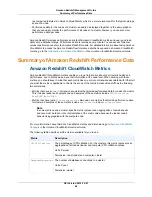
Redshift ensures that it retains all of the incremental backup data required to restore a cluster using any
manual snapshot, or any automatic snapshot that has not yet reached the snapshot retention period
You can monitor the progress of long-running snapshots by either calling
describe-cluster-snapshot
in
the CLI, or by calling the
DescribeClusterSnapshots
API action. For an in-progress snapshot, these display
information such as the size of the incremental backup, the transfer rate, the elapsed time, and the
estimated time remaining.
Amazon Redshift provides free storage for snapshots that is equal to the storage capacity of your cluster
until you delete the cluster. You can use this free storage for automated or manual snapshots. After the
free backup storage limit is reached, you are charged for any additional storage at the normal rate. For
pricing information, go to the Amazon Redshift
product detail page
.
Restoring a Cluster from a Snapshot
A snapshot contains data from any databases that are running on your cluster, as well as information
about your cluster, including the number of nodes, node type, and master user name. If you need to
restore your cluster from a snapshot, Amazon Redshift uses the cluster information to create a new cluster
and then restores all the databases from the snapshot data. The new cluster that Amazon Redshift creates
from the snapshot will have same configuration, including the number and type of nodes, as the original
cluster from which the snapshot was taken. The cluster is restored in the same region and the availability
zone unless you specify another availability zone in your request.
You cannot use a snapshot to revert an active cluster to a previous state.
Note
The new cluster will be associated only with the default security and parameter groups. If the
original cluster was associated with any other security or parameter group, you will need to
manually associate those groups with the new cluster.
Copying an Automated Snapshot
Amazon Redshift deletes an automated snapshot at the end of its retention period, when you disable
automated snapshots, or when you delete the cluster. If you want to keep an automated snapshot for a
longer period, you can copy it to a manual snapshot. Manual snapshots are retained until you delete
them.
Sharing Snapshots
You can authorize access to an existing manual snapshot for as many as 20 AWS customer accounts.
A person logged in to one of the authorized accounts can then restore the snapshot to create a new
Redshift cluster under their account. For example, if you use separate accounts for production and test,
you can log on using the production account and authorize the test account to access a production
snapshot. Someone logged on to the test account can then restore the snapshot to create a new cluster
for testing or diagnostic work.
A manual snapshot is owned by the AWS customer account under which it was created or copied. The
owner account is the only one that can authorize other accounts to access the snapshot, or to revoke
authorizations. Authorized accounts can only restore the snapshot, they cannot copy the snapshot. An
authorization remains in effect until the snapshot owner revokes it. If an authorization is revoked, the user
loses visibility to the snapshot and cannot launch any new actions referencing the snapshot. If the account
is in the process of restoring the snapshot when access is revoked, the restore runs to completion. You
cannot delete a snapshot while it has active authorizations, you must first revoke all of the authorizations.
The owner account is always authorized to access the snapshot. Attempts to authorize or revoke access
to the owner account will receive an error. You cannot restore or describe a snapshot that is owned by
an inactive AWS customer account.
API Version 2012-12-01
53
Amazon Redshift Management Guide
Restoring a Cluster from a Snapshot

